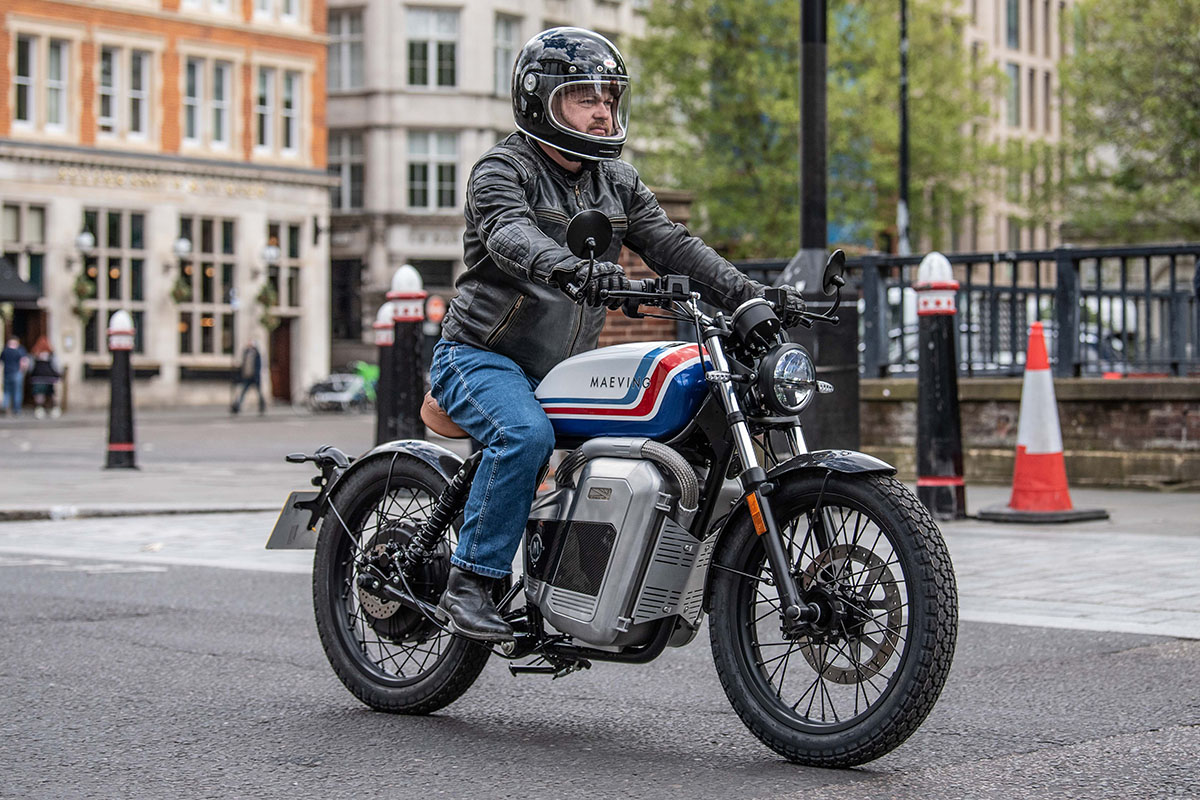It’s a tough time to be an electric motorcycle manufacturer. Sales are down, the public are hostile and companies are going out of business, but there is one electric motorcycle manufacturer who at least appears to be bucking the trend: Coventry company Maeving.
We reviewed the trendy RM1 when it was launched nearly two years ago and were well impressed. Others were too, and it’s sold well in what has otherwise been a tumultuous time for EVs. The RM1S is an evolution of this bike and incorporates much of the feedback given by customers, as well as prospective buyers who didn’t quite pull the trigger on a Maeving. The headline figure is the increased performance, which in turn gives the RM1S a higher top speed.
Now the RM1S is still no speedster. It remains a city bike, albeit one with a bit more flexibility and the capability to tackle the odd dual carriageway and even stretches of motorway, as we experienced during our test ride.
The rear wheel mounted motor is Maeving’s own design and although it looks similar to the one found on the RM1, power is more than doubled. The RM1S is rated at 7kw of continuous power, with 10.4kw available in short bursts. That means it’s still learner legal and can be ridden on L plates after passing the CBT training, but top speed rises from 45 to 70mph. It remains a fully automatic ‘twist and go’ meaning there’s no clutch, no gearbox and no fuss. It is very simple to ride.
Adding more power might seem straightforward enough, but it’s not quite as easy as it sounds. A more powerful motor needs a more capable battery, and Maeving’s design red lines – namely batteries which can be removed for charging and a range of 80 miles – has led to some redesigns.
The batteries have 35% more capacity than those found on the RM1. They feature new and improved automotive grade cells made by electronics giant LG, taking the capacity of each up to 2.7kWh. That’s an impressive number when you consider they still weigh ‘only’ 15kg each and can be removed for charging. Where the previous design had one battery located in the area petrolheads would recognise as the fuel tank, and the other in the ‘engine’ area, the RM1S has both located where you’d find the engine in a traditional petrol bike – with the ‘fuel tank’ now acting as a very useful glove box, with a capacity of 10 litres.
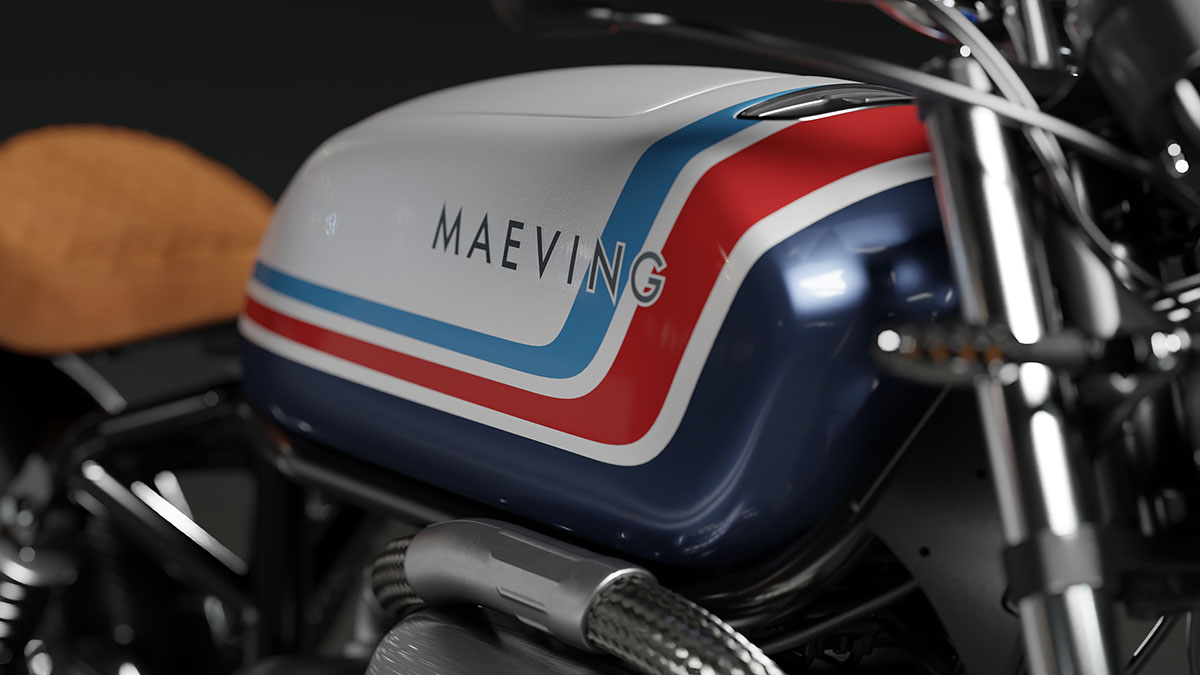
The result is that while the RM1S is a touch heavier and wider in the battery area, it carries its weight lower down and feels a little more planted to ride. The whole thing weighs just 133kg with the batteries fitted, which is less than most 125cc petrol bikes.
The other major improvement gleaned from customer feedback is the addition of an onboard charger. With the RM1 the batteries have to be removed in order to be charged, but with S model you can either remove them or keep them in place, using a port on the side of the bike to attach a charger. It’s definitely more convenient for owners who have a garage, or who can park up next to a plug socket.
Speaking of charging, the Maeving just plugs into a regular three-pin socket. A full charge, from 0-100% is around six hours, however as few riders run their battery right down to nought, a more likely scenario is a 20-80% charge, which is more like two-and-a-bit hours.
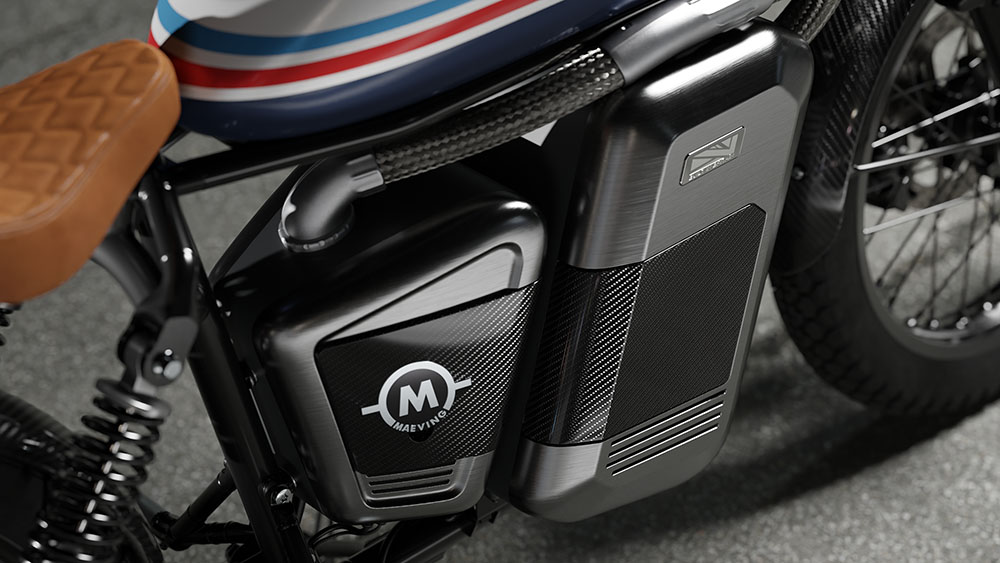
We spent a day riding around London on the RM1S, which is mainly an adventure through 20 and 30 zones, but we did get a chance to open it up on the A12, where it quickly got up to the 50mph speed limit and held it with ease. We didn’t get the chance to test Maeving’s 70mph claim, but for sure there was still something in reserve as we sat at the legal limit.
Range is stated as ‘up to’ 80 miles and, as is always the case with EVs, it will vary dramatically depending on the type of riding you do, weather conditions and payload. We did around 30 miles, mainly navigating 20 and 30 zones, and in this city riding there’s no reason to believe that 80 mile range couldn’t be achieved, as we still had over 60% range left at the end of our test ride, despite our sojourn down the dual carriageway. Riding on the open road will certainly see that 80 mile range drop. We’re unable to verify any figures, but for sure you won’t be able to get 80 flat out motorway miles from an RM1S.
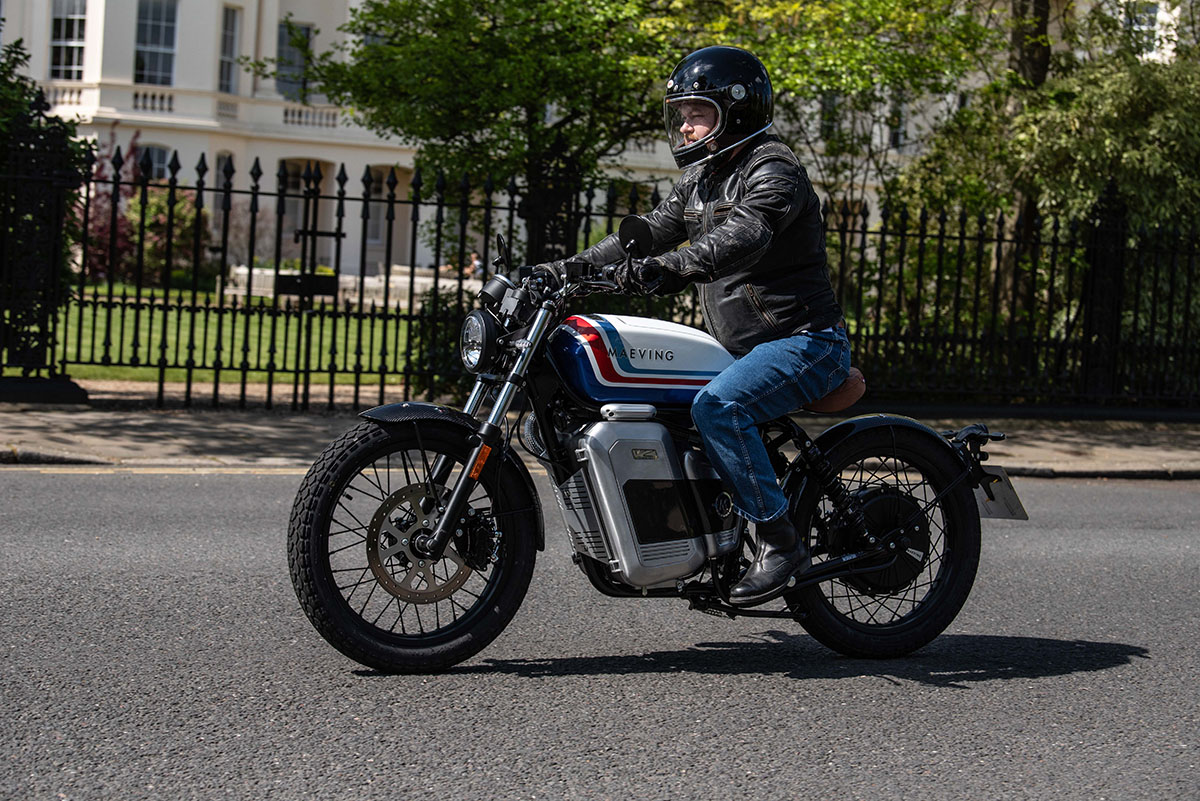
But that’s not the point of the Maeving. It’s unashamedly a city commuter and if you want to tour from Edinburgh to London you should absolutely look elsewhere. The extra performance, which can be accessed by putting the bike into ‘S’ mode, opens up Maeving to a new audience. Where the RM1 had a top speed of 45mph, the S version’s extra speed means it can now stay ahead of traffic on the open road. That should make it safer on faster roads and more appealing to suburban commuters who want to take in a wider variety of roads. We certainly didn’t feel out of place riding down the middle lane of the A12 during our day-long test ride.
But otherwise the RM1S remains largely as per the base model, which remains in the range. There are two new colours available as an option, including the multicoloured ‘Gilbert’ livery of the bike we rode. This carries a £700 premium over the single colour options, which seems pricy even if it is very smart, although the paint upgrade and carbon fibre mudguards are included at no extra charge on these first edition models.
Two years on and the Maeving still turns heads. It starts a conversation wherever you park up, which you may or may not find a good thing. It really does have a distinctive style, which in custom motorbike circles is known as a bobber look, with that eye catching diamond stitched saddle (which can be specified in a number of colours) playing a major part in it. I’ll be honest and say that I didn’t really get on with the seat and ergonomics in my time with the bike, however I’ll put a lot of that down to my shape and size as no other riders on our press junket complained. I’m pretty short and although the bike is very, very manageable, there is a bit of a stretch to the handlebars. That left me in a bit of a predicament, where I could choose between getting my butt back in the sumptuous part of the heavily sculpted seat but having to stretch unnaturally to the ‘bars, or I could sit in a more natural position but with my backside plonked on the not especially comfortable pointy end of the saddle. For short distances, for which this bike is designed, it wasn’t a problem but after a full day’s riding I felt it was one area where improvements could be made – for me, at least.
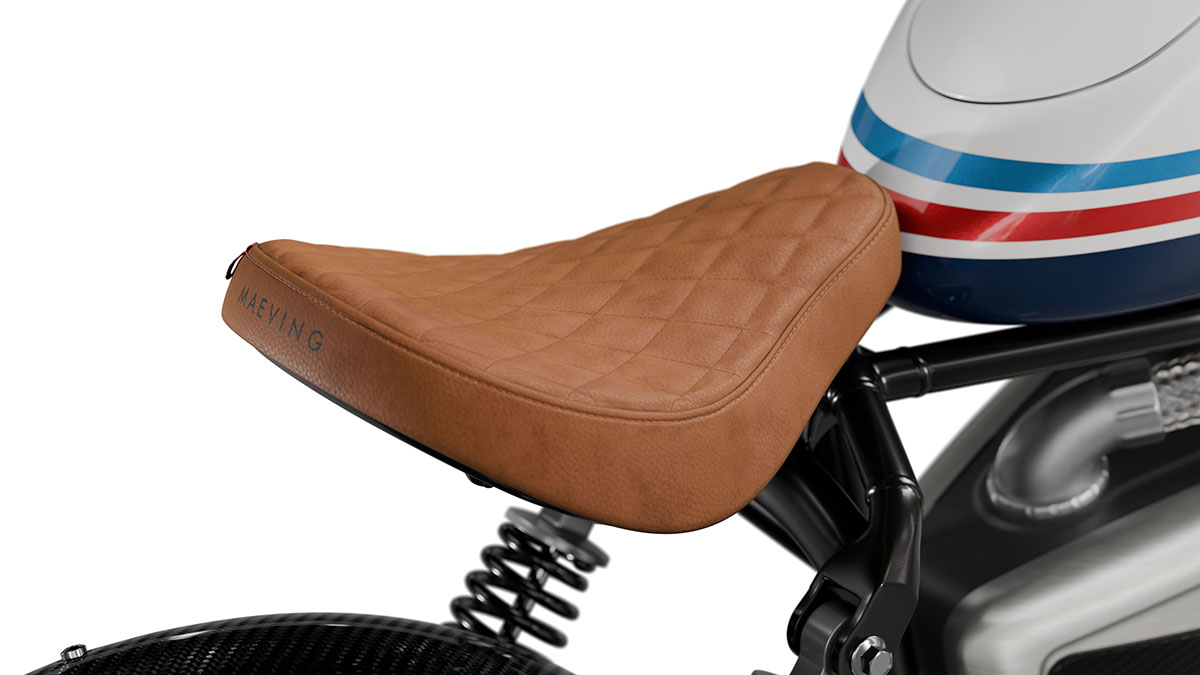
The comfort wasn’t helped by the speed bumps and potholed roads on our real world test route. The Maeving’s suspension isn’t the most sophisticated but for its intended purpose it is more or less ok. I think if you’ve owned modern Vespas or scooters from the established Japanese brands, you’d probably jump on the Maeving and find the chassis and brakes a little basic. They do the job, but dynamically it’s nothing to write home about. The front brake, incidentally, is the other main upgrade from the RM1, with a bigger front disc being deployed to provide more stopping power to cope with the added performance. There’s no anti-lock system though, which is a shame. The right hand brake lever activates the front brake, which I couldn’t lock up in warm and dry conditions of our test ride, with the left hand lever activating the linked front and rear brakes together, with a 60% bias towards the rear.
Overall the Maeving RM1S is an interesting proposition, one which can offer commuters more freedom while reducing exhaust pipe emissions and traffic congestion. It’s not for everyone, and that’s the point. Maeving are quite clear that they’re not trying to ram electric down people’s throats or suggest that they’ve got the solution for every single travel scenario. What they have got, however, is a solution which will work well for riders with specific commuting needs.
Electric motorcycles are so easy to ride and the removable batteries make the RM1S a very easy machine to live with. The guys at Maeving say they were inspired by the number of electric scooters being used in China, which were fun and practical, if a little soulless and poorly built. They wanted to make a British take on the concept, which was well made and which owners would be proud to ride. This is the result, and it’s hard to argue they haven’t done a good job. It’s a great British success story and a testament to the company’s vision and determination.
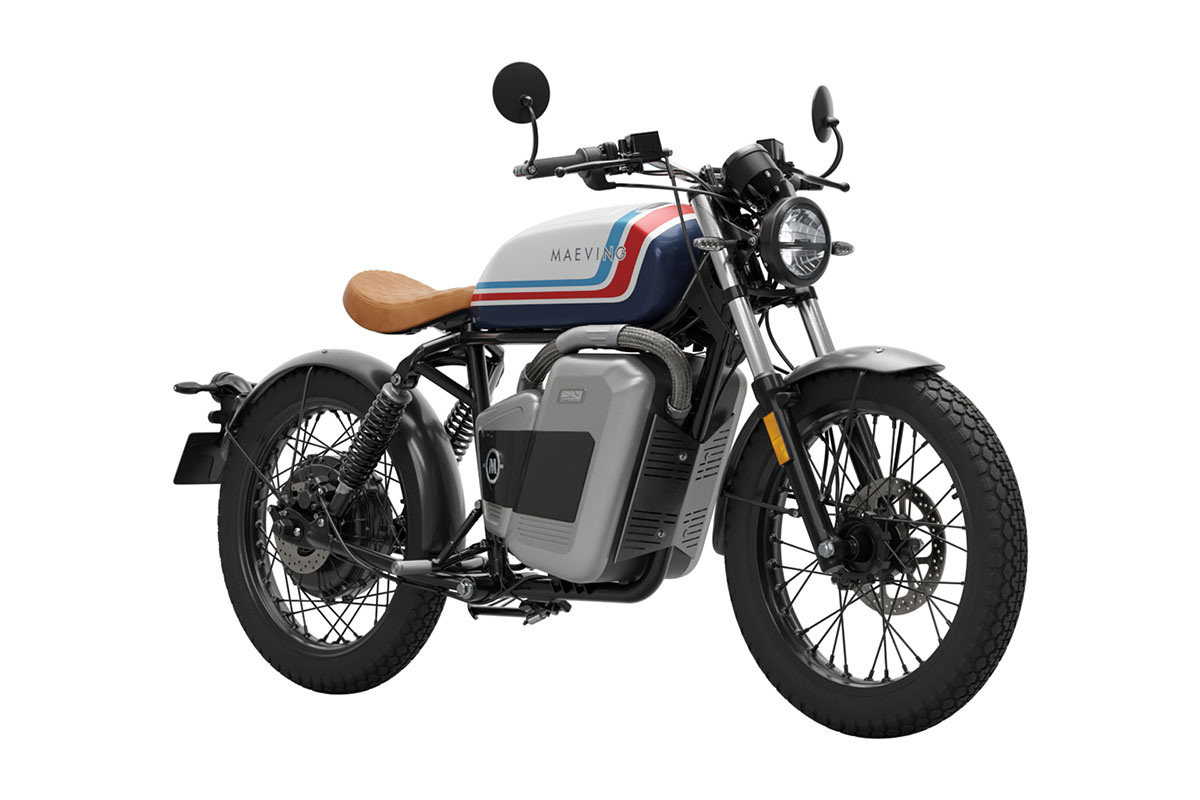
Maeving RM1S specification
| Price | £7,495 |
| Motor type | Rear hub mounted electric motor. Three ride modes. |
| Battery | 2 x 2.73kW/h |
| Recharge time | 5h 57min (0-100%), 2h 30min (20-80%) |
| Power | 7kW (9.4bhp) continuous, 10.3kW (13.8hp) peak |
| Top speed | 70mph (claimed) |
| Transmission | Automatic |
| Range | Up to 80 miles |
| Frame | Steel tube |
| Front suspension | Non-adjustable traditional forks, 110mm travel |
| Rear suspension | Twin shock, adjustable preload, 80mm travel |
| Front brake | 240mm disc, three-piston caliper |
| Rear brake | 180mm disc, one-piston caliper, linked |
| Front tyre | 3.25 x 19 Dunlop K70 |
| Rear tyre | 3.25 x 19 Dunlop K70 |
| Seat height | 785mm |
| Wheelbase | 1395mm |
| Kerb weight | 133kg |
| Website | www.maeving.com |


